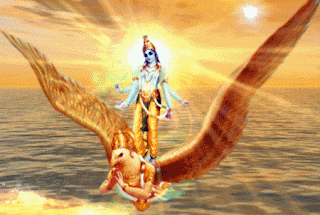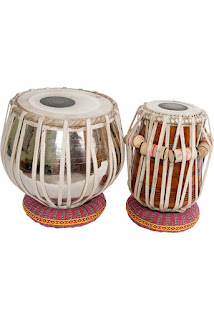Deity Vishnu and Lord Hanuman are worshipped on the day of Magha Purnima.
हिंदू कैलेंडर के माघ महीने की पूर्णिमा तिथि बेहद खास होती है। इस तिथि को माघ या माघी पूर्णिमा के नाम से जाना जाता है। मान्यता है कि इस दिन भगवान श्री हरि विष्णु गंगाजल में वास करते हैं। इसलिए इस दिन गंगा स्नान का विशेष महत्व है।
पौराणिक मान्यताओं के अनुसार माघ पूर्णिमा के दिन भगवान विष्णु पृथ्वी पर आकर गंगा के निर्मल जल से स्नान करते हैं। यही नहीं अन्य सभी देवता भी अपना रूप बदलकर गंगा में स्नान करते हैं। कहा जाता है कि सभी देवता प्रयागराज के तट पर गंगा में डुबकी लगाते हैं। यही वजह है कि माघ पूर्णिमा के दिन का महत्व और भी बढ़ जाता है।
साथ ही चंद्रदेव की भी पूजा की जाती है। इस दिन पवित्र नदी पर स्नान किया जाता है और उसके बाद अपनी सामर्थ्यनुसार दान करने की परंपरा है.
वहीं, अगर आज के दिन पितरों का तर्पण किया जाए तो व्यक्ति की धन-संपदा और बौद्धिक क्षमता में भी वृद्धि होती है।
https://www.drikpanchang.com/purnima/magha/magha-purnima-date-time.html?year=2020
9th
February 2020
Sunday / रविवार
16th
February 2022
Wednesday / बुधवार
https://www.drikpanchang.com/purnima/magha/magha-purnima-date-time.html?year=2021
27th
February 2021
Saturday / शनिवार
श्रीविष्णु
स्तुति मन्त्र
शुक्लाम्बरधरं
विष्णुं शशिवर्णं चतुर्भुजम्
Shuklambaradharam Vishnum Shashivarnnam Caturbhujam
Shuklambaradharam Vishnum
(1) Suklaam bara Dharam Vishnum,
Sashi Varnam Chatur Bhujam,
Prasanna Vadhanam Dhyaayet,
Sarva Vighna Upa shaanthaye,
Santa Kaaram Bhujaga Shayanam,
Padma nabham Suresham,
Vishva dharam Gagana Sadrsham,
Megha Varnam Subhangam,
Lakshmi Kantam Kamala Nayanam,
Yogibhir Dhyana Gamyam.
Vande Vishnum Bhava Bhaya Haram,
Sarva Lokaiaka Natham
(2)
Oushade Chinthaye Vishnum,
Bhojane cha Janardhanam,
Shayane Padmanabham cha,
Vivahe cha Prajapathim,
Yuddhe Chakradharam devam,
Pravase cha Tri vikramam,
Narayanam Thanu thyage,
Sreedharam priya sangame,
Duswapne smara Govindam,
Sankate Madhu soodhanam,
Kaanane Naarasihmam cha,
paavake Jalashayinam,
Jalamadhye Varaham cha,
Parvathe Raghu nandanam,
Gamane Vaamanam Chaiva ,
Sarva Karyeshu Madhavam.
Shodasaithani Naamani,
Prathar uthaaya ya padeth,
Sarva papa vinirmuktho,
Vishnu Lokai mahiyati
(5) I adore Lord Vishnu who is the embodiment of peace, who lies on the Shesha serpent, whose navel is the source of the Lotus of the Universe, whose complexion is swarthy like the clouds, whose body shines with heavenly beauty, who is the beloved of Goddess Lakshmi, whose eyes are like Lotus, who is meditated upon by the yogis, who is the remover of the fear of the world-process, the cycle of birth and death.
Think him as Vishnu while taking medicine,
As Janardhana while eating food,
As Padmanabha while in bed,
As Prajapathi at time of marriage,
As Chakra dhara while engaged in war,
As Trivikrama while on travel,
As Narayana on death bed,
As Sreedhara while meeting with the beloved,
As Govinda while tossing with bad dreams,
As Madhu Sudhana while in trouble,
As Narasimha while in the forest,
As Jala Sayina while fire is ravaging,
As Varaha while struggling in water,
As Raghu nandana while lost in a mountain,
As Vamana while on the move,
And as Madhava while doing everything.
प्रसन्नवदनं
ध्यायेत् सर्वविघ्नोपशान्तये
॥
Shukla-Ambara-Dharam Vissnnum Shashi-Varnnam Catur-Bhujam |
Prasanna-Vadanam Dhyaayet Sarva-Vighnou pashaantaye ||
Meaning:
(We Meditate on Sri Vishnu) Who is Wearing White Clothes,
Who is All-Pervading, Who is Bright in Appearance like the Moon and Who is
Having Four Hands,Who is Having a Compassionate and Gracious face, Let us
Meditate on Him To Ward of all Obstacles.
शान्ताकारं
भुजगशयनं पद्मनाभं सुरेशं
विश्वाधारं
गगनसदृशं मेघवर्ण शुभाङ्गम् ।
लक्ष्मीकान्तं
कमलनयनं योगिभिर्ध्यानगम्यम्
वन्दे
विष्णुं भवभयहरं सर्वलोकैकनाथम् ॥
Shaanta-Aakaaram Bhujaga-Shayanam Padma-Naabham Sura-Iisham
Vishva-Aadhaaram Gagana-Sadrsham Megha-Varnna Shubha-Anggam|
Lakssmii-Kaantam Kamala-Nayanam Yogibhir-Dhyaana-Gamyam
Vande Vissnnum Bhava-Bhaya-Haram Sarva-Loka-Eka-Naatham ||
Meaning:
(Salutations to Sri Vishnu) Who has a Serene Appearance, Who
Rests on a Serpent (Adisesha), Who has Lotus on His Navel and Who is the Lord
of the Devas, Who Sustains the Universe, Who is Boundless and Infinite like the
Sky, Whose Colour is like the Cloud (Bluish) and Who has a Beautiful and
Auspicious Body,
Who is the Husband of Devi Lakshmi, Whose Eyes are like
Lotus and Who is Attainable to the Yogis by Meditation, Salutations to That
Vishnu Who Removes the Fear of Worldly Existence and Who is the Lord of All the
Lokas.
औषधे
चिंतये विष्णुम ,भोजने च जनार्धनम |
शयने
पद्मनाभं च, विवाहे च प्रजापतिम||
युद्धे
चक्रधरम देवं, प्रवासे च त्रिविक्रमं|
नारायणं
तनु त्यागे, श्रीधरं प्रिय संगमे||
दुःस्वप्ने
स्मर गोविन्दम,संकटे मधुसूधनम|
कानने
नारासिम्हम
च,पावके जलाशयिनाम||
जलमध्ये
वराहम च, पर्वते रघु नन्दनं|
गमने
वामनं चैव , सर्व कार्येशु माधवं||
Oushade Chinthaye Vishnum,Bhojane cha Janardhanam,
Sayane Padmanabham cha,Vivahe cha Prajapathim ||
Yuddhe Chakradharam devam,Pravase cha Trivikramam,
Narayanam Thanu thyage,Sreedharam priya sangame ||
Duswapne smara , Govindam,Sankate Madhu sudhanam,
Kanane Narasimham cha,Pavake Jalasayinam ||
Jalamadhye Varaham cha,Parvathe Raghu nandanam,
Gamane Vamanam Chaiva ,Sarva Karyeshu Madhavam||
Meaning:
Think him as Vishnu while taking medicine,
As Janardhana while eating food,
As Padmanabha while in bed,
As Prajapathi at time of marriage,
As Chakra dhara while engaged in war,
As Trivikrama while on travel,
As Narayana on death bed,
As Sreedhara while meeting with the beloved,
As Govinda while tossing with bad dreams,
As Madhu Sudhana while in trouble,
As Narasimha while in the forest,
As Jala Sayina while fire is ravaging,
As Varaha while struggling in water,
As Raghu nandana while lost in a mountain,
As Vamana while on the move,
And as Madhava while doing everything.
षोडशैतानी
नमानी प्रातरुत्थाय यह पठेत
सर्वपापा
विर्निमुक्तो
विष्णुलोके
महीयते ||
Shodasaithani Naamani,Prathar uthaaya ya padeth,
Sarva papa vinirmuktho,Vishnu loke mahiyate.
Meaning:
As soon as one wakes up in the morning,If these sixteen
names are read,
He would be bereft of all sins, And reach the world of
Vishnu at the end.
शान्ताकारं
भुजगशयनं पद्मनाभं सुरेशं
विश्वाधारं
गगनसदृशं मेघवर्णं शुभाङ्गम्।
लक्ष्मीकान्तं
कमलनयनं योगिभिर्ध्यानगम्यं
वन्दे विष्णु भवभयहरं सर्वलोकैकनाथम्।।
अर्थ
: जिनकी आकृति अतिशय शांत है, जो शेषनाग की शैया पर शयन किए हुए हैं, जिनकी नाभि में कमल है, जो देवताओं के भी ईश्वर और संपूर्ण जगत के आधार हैं, जो आकाश के सदृश सर्वत्र व्याप्त हैं, नीलमेघ के समान जिनका वर्ण है, अतिशय सुंदर जिनके संपूर्ण अंग हैं, जो योगियों द्वारा ध्यान करके प्राप्त किए जाते हैं, जो संपूर्ण लोकों के स्वामी हैं, जो जन्म-मरण रूप भय का नाश करने वाले हैं, ऐसे लक्ष्मीपति, कमलनेत्र भगवान श्रीविष्णु को मैं प्रणाम करता हूँ।
यं
ब्रह्मा वरुणेन्द्ररुद्रमरुत:
स्तुन्वन्ति
दिव्यै: स्तवै-
र्वेदै:
साङ्गपदक्रमोपनिषदैर्गायन्ति
यं सामगा:।
ध्यानावस्थिततद्गतेन
मनसा पश्यन्ति यं योगिनो-
यस्तानं
न विदु: सुरासुरगणा देवाय तस्मै नम:।।
अर्थ
: ब्रह्मा,
वरुण, इन्द्र, रुद्र और मरुद्गण दिव्य स्तोत्रों द्वारा जिनकी स्तुति करते हैं, सामवेद के गाने वाले अंग, पद, क्रम और उपनिषदों के सहित वेदों द्वारा जिनका गान करते हैं, योगीजन ध्यान में स्थित तद्गत हुए मन से जिनका दर्शन करते हैं, देवता और असुर गण (कोई भी) जिनके अन्त को नहीं जानते, उन (परमपुरुष नारायण) देव के लिए मेरा नमस्कार है।

































